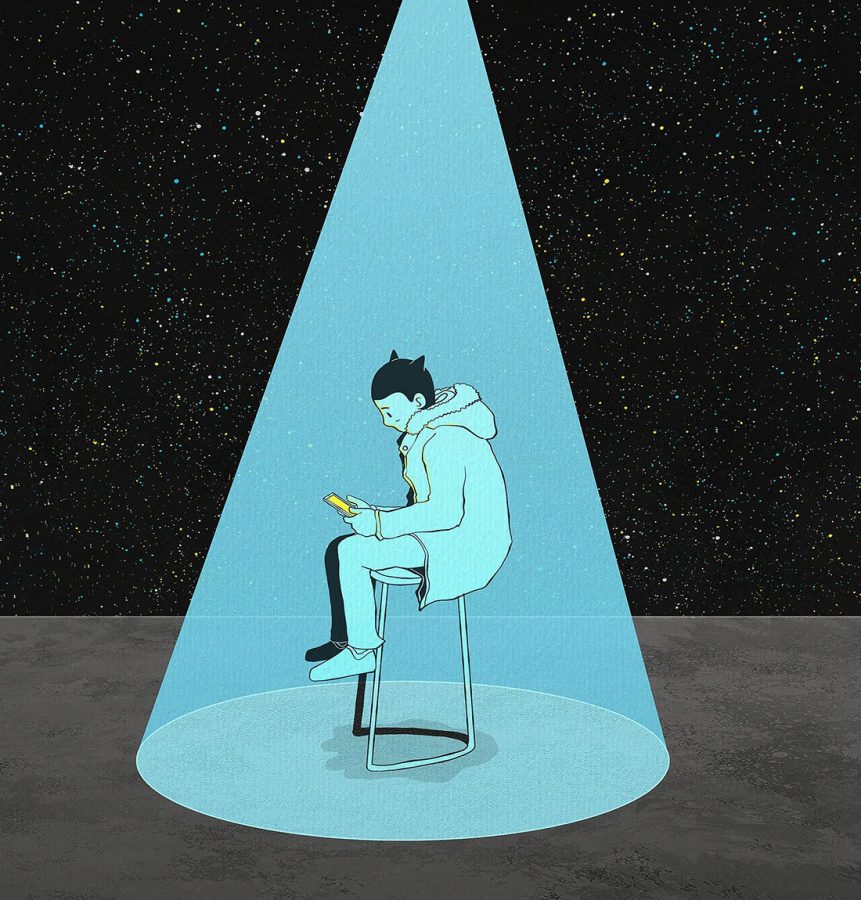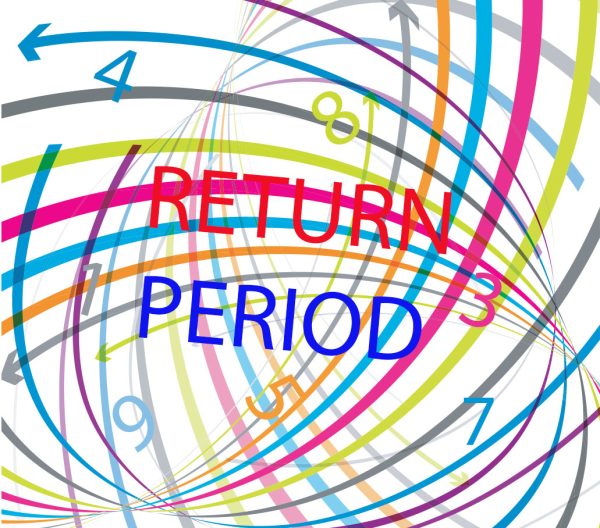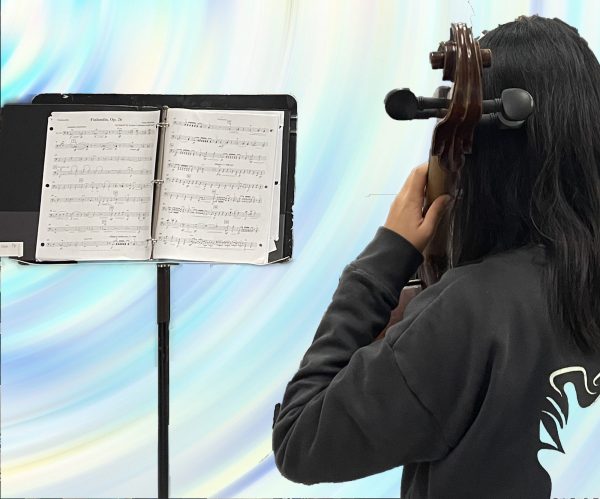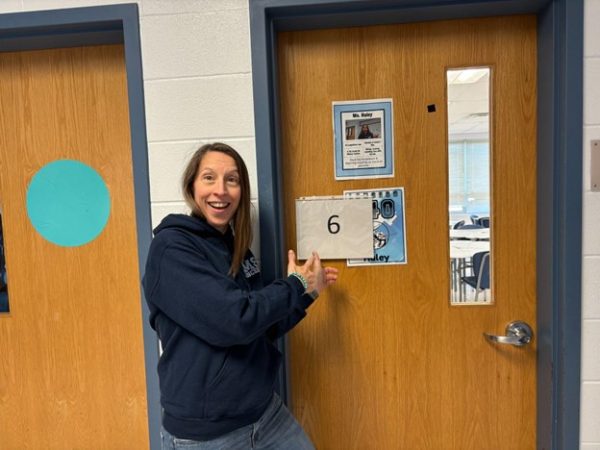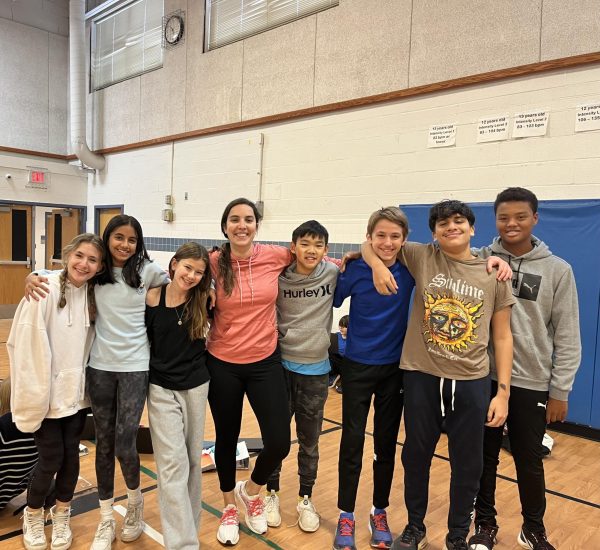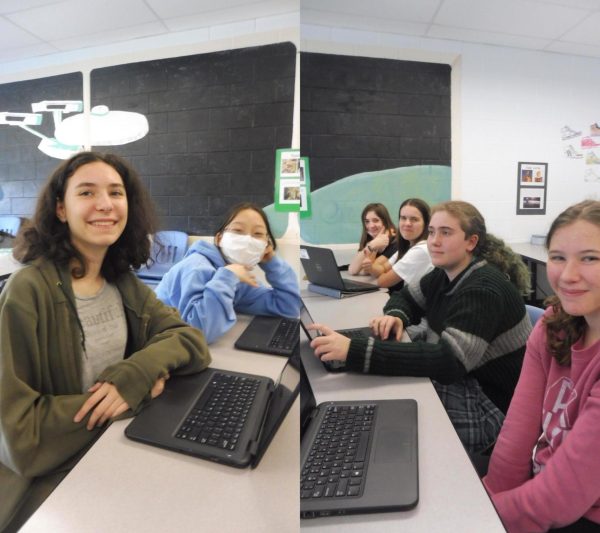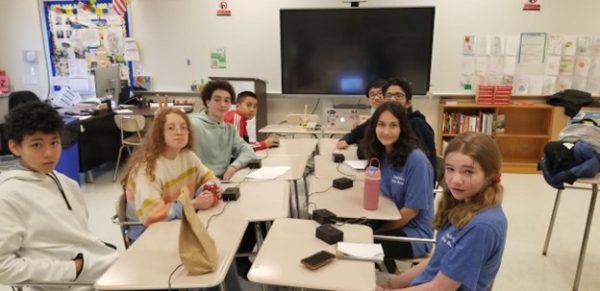Theatre Teachers Strive To Create Connection On Virtual Stage
In 2019, a quick trip through the library hallway would nearly always include theatre students who had spilled out from Ms. Barry’s classroom, taking the available space to work in groups on their latest assignment. Cut to 2020, and they are all stuck in tiny boxes on a screen.
Performing arts students and teachers are faced with many challenges due to distance learning. Adjusting to this new system puts a crimp in the vast amount of hands-on and collaborative activities the courses usually offer.
“The biggest adjustment we have had to make in my online acting classes is the understanding that collaboration looks a lot different,” said Theatre Director and teacher Sarah Barry.
Barry described that students are more nervous about performing online than they would be in class. To allow for this hesitance, Ms. Barry always offers students the opportunity to work independently or only share their performances with her.
“I’m finding that as time goes on, more students are wanting to collaborate and share, but it’s definitely been a process and a learning curve for me as a teacher who usually has students chomping at the bit to perform with and for one another,” she added.
Theatre gives students the opportunity to explore activities that enhance creativity, confidence, and communication through performing skills and on stage. The course teaches the concepts of acting, performance, and teamwork, with a balance of fun and professionalism. Theatre teachers are aiming to convey these emotions and experiences through classes, despite going online.
Tech theatre is also challenging in the distance learning environment.
“My subject matter is based on a lot of hands-on activities. In my class, we draw ground plans and elevations, conceptual drawings, design costumes, hair, and makeup. We do lighting design as well as sound design. It’s been challenging to figure out a way for students to turn things in.” explained Patricia Talmadge, who teaches Tech Theatre and Media Communications. “Distance Learning has affected a lot of the way performing arts is taught, but I can still offer key concepts. While students aren’t able to participate in a light-hang, for instance, I can still teach them about how lighting works.”
This is Talmadge’s first year at Longfellow, so teaching online is not her only new experience. Fortunately, her knowledge and best practices work well with the new format.
“I would do this anyway, but I need to especially ensure that I explain concepts thoroughly. I do this by introducing a concept, often drawing from students’ prior knowledge, then I take it a step further. I show as many visual examples (graphics and slides) and videos to build on the new information. We have a lot of discussion. I also try not to over-explain because I think trial-and-error is an excellent way to learn. I want my students to make their own discoveries because the new information will take ‘hold’ better.”
Another issue that comes with distance learning is that not everyone turns on their cameras in class. Talmadge mentions how it is hard to connect with a bunch of profile pictures. She also cannot walk around to check in with student’s work, making it harder to track progress and see who needs help.
Despite the lack of a stage and live audience, Ms. Barry is still working on a play.
“The play is called Snapshots, and it’s a series of scenes and monologues about teen life in 1992. Most of the scenes will be recorded in Google Meets,” said Barry.


